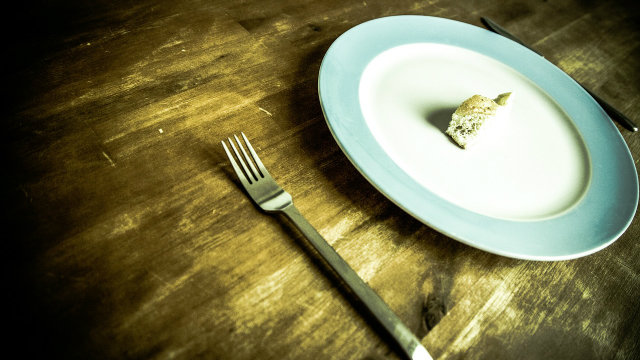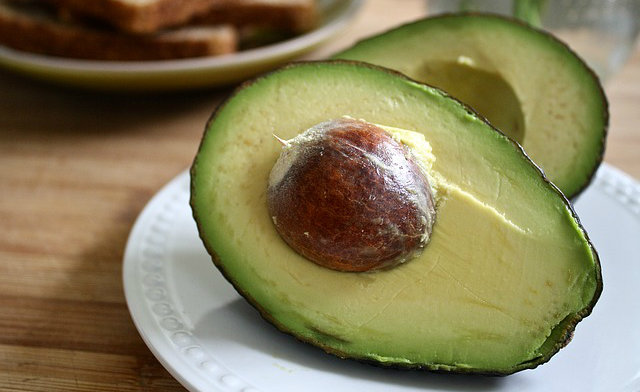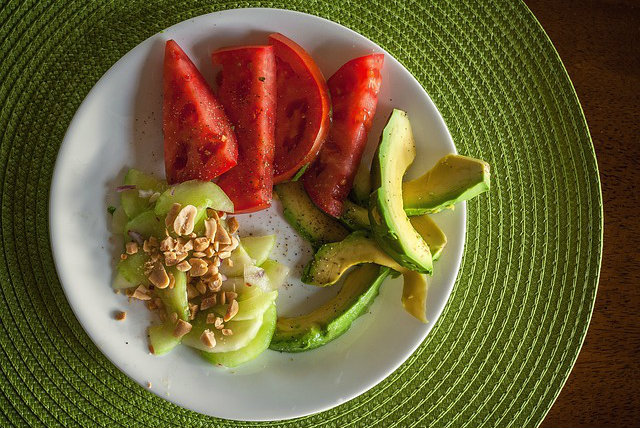 Reading Time: 7 minutes
Reading Time: 7 minutesFor the last fifteen years, I have been writing tailored diets for my clients, both online and in person, and the majority of my weight-loss clients have been women who have come to me after trying almost everything — thermogenics, diet pills, grapefruit diets, ketogenic diets, skipping meals, and so on.
To cut a long story short, the main theme that runs throughout all of these women’s lives is that most aren’t eating enough. Period.
Is Cutting Calories and Exercising More Really the Correct Answer?
Most of us as trainers are taught the simplistic notion that input versus output is the key to weight loss. Basically, you must burn off more than you eat. This idea may work for someone who has not spent years yo-yo dieting (destroyed their metabolism in the process) or for clients who eat a surplus of calories while sitting on the couch doing nothing. But that likely doesn’t describe most of you. Most of you are probably female, are reasonably active, don’t stuff your face with junk food, and aren’t morbidly obese.
I see a lot of women just like you. The reality of the situation is that these women are half-starved with metabolisms crawling along at a snail’s pace. Therefore, this notion of cutting calories and exercising more doesn’t apply. In fact, it is this concept that has put these ladies, and possibly you, in this situation in the first place. They have denied their bodies the calories and nutrients they need in an unrewarded effort to shed those stubborn ten to twenty pounds.
Let me explain how cutting calories can be damaging and how to get yourself out of this situation — and finally lose the weight.
Why Cutting Calories Is So Bad
Continued dieting based on calorie cutting causes your metabolic rate to slow down. The metabolic rate is the rate at which your body burns calories for energy. When you are in a prolonged state of calorie-restriction, instead of using up your fuel for all your bodily functions, your body stores incoming calories since it thinks it is starving and wants to save every last calorie for survival.
Many basic biological functions also slow or shut down under prolonged calorie restriction, such as healing from cuts and bruises, hair growth, and nail growth. In addition, you wind up with compromised immune function that can lead to an inability to fight off infections and viruses, limited ability to filter toxins from the body, lethargy, and low energy. Some of my clients have put their bodies under so much stress that they cease to ovulate, which is a huge sign that a woman’s body is not healthy.
So, if you are one of these ladies who has spent years dieting, who barely eats and can’t shift the weight, then is eating less and doing more really the right thing to do?
This concept is so widespread — yet so dangerous. If you continue with cutting calories, then you are just causing more damage to your body. Overcoming the gradual weight gain that occurs from having such a slow metabolism by doing more and more exercise and eating even less becomes a never-ending and downward spiral that leads to long-term weight gain, muscle loss, and an impaired immune system. Is any of this sounding familiar?
The Real Rules of Eating for Weight Loss
Having the knowledge about the right way to eat is the key to avoid “dieting” and all the negative aspects that go along with it. Knowing what to eat, how much to eat, and when to eat can enable you to make better choices to create a lifelong nutrition plan that will allow you to achieve a healthy weight. Understanding the powerful effect food has on the body can help you reach your specific goals without dangerously cutting calories. Here are four rules to get you started in the right direction:
1. Always eat breakfast.
One of the keys to maintaining a trim body is to start the day off with a good hearty meal in the morning. Even if you have to work early, wake up thirty minutes earlier to make the time for breakfast. A good nutritious breakfast is the best way to kick-start your metabolism for the rest of the day. It creates the benchmark for the rate at which your body will be burning calories for that day.
If you are not hungry in the mornings, then force-feed yourself. Your lack of appetite is just a sign your metabolism is slow and your body has adapted to years of deprived caloric intake. There is no way that after hours with no food during the night that your body does not require calories when you wake. Over time, once your metabolism increases, you will notice you are once again hungry for breakfast in the mornings.
In order to prevent your metabolism from down regulating, begin the day with a hearty breakfast to keep your energy levels up and your metabolism burning the calories you eat, rather than storing them. You can find lots of great recipes here, including my personal favorite.
2. Eat every three hours or so, even if it is just a snack.
Another key to losing weight and keeping it off is to feed your body consistently, roughly every three hours, even if it is just a snack. When your body recognizes it is getting the calories it needs, it stays in “burning mode” instead of “storing mode.” Skipping meals or not eating enough of the right types of foods keeps your stress hormones, such as insulin and cortisol, elevated because your body thinks it is experiencing a famine. Therefore, instead of utilizing the calories consumed, your body will store them.
Eating regularly increases your metabolic rate and prompts your body to burn more calories at rest because it is processing all of its biological functions at the optimal level.
3. Consume the majority of your calories in the first half of the day.
Think of your body like a furnace. The more fuel you feed it, the more fuel it will burn and the more powerful the engine will be. Thinking that way, it makes sense to feed your body more in the first half of the day. This keeps your metabolism elevated and gives you the energy to get through your daily tasks.
The mistake a lot of people make is that they don’t eat enough throughout the day, and then at night they sit down to a big meal, only to go to bed with a belly full of food that they can’t burn off. Throughout the day their metabolism slows down to deal with the lack of calories and then at night, it is bombarded with calories it cannot expend — and this is a recipe for weight gain.
Eating more in the first half of the day rather than the second half will ensure those calories are being used to provide fuel for your body throughout the day. This means your body is using your calories for energy rather than storing them.
4. Drink plenty of water.
In addition to not eating enough, most of the clients that come to me to lose weight don’t drink enough water either. Water is absolutely essential for weight loss and overall health. Everything from utilizing our food for energy, to the elimination of waste in our cells, to cellular repair requires water.
Chronic dehydration not only limits your ability to lose weight, but it can also cause poor digestion, constipation, and lethargy to name a few things. Drink plenty of water to ensure your metabolism and your digestive system is running smoothly.
The Conclusion on Cutting Calories: Eat Lots…of the Right Stuff
Eating less may indeed make you lose weight, but it does not make you lose body fat. If you want to be skinny-fat, have lots of wobbly bits, be constantly tired and lethargic, and feel on the brink of being sick, then by all means, eat less. But if you want to be strong, healthy, energetic, and toned with a firm body that carries plenty of fuel-burning muscle, then eat lots, but eat the right stuff.
Understanding your metabolism and using the four factors mentioned here as a guideline should help motivate you to eat regularly and drink enough. Cutting calories is not the answer to long-term weight loss. Eating an abundance of whole, fresh, and unprocessed foods on a regular basis with plenty of water is the key to long-term weight loss and keeping it off.











